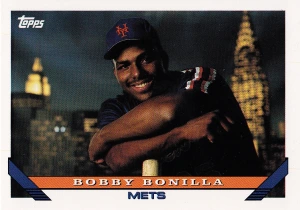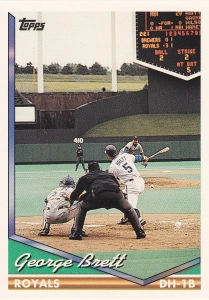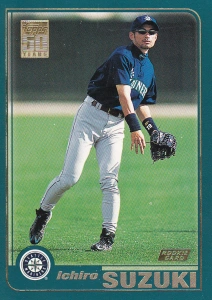
I’ve got two more posts about my experiences from All-Star weekend. First, as I mentioned at the end of my post yesterday, I went to Mike and Mike Monday morning. They broadcast from Moerlein Lager House, which is right next door to Great American Ballpark. Coincidentally, I’ve done a Saturday Suds blog post about this establishment.
On the outside chance anyone reading this doesn’t know (it’s possible, but the demographics would surprise me), Mike and Mike is ESPN’s national morning sports talk show. It’s the most popular sports talk show in the country. And it showed on this day.

The Lager House opened at 5 in the morning for a breakfast buffet. My dad and I left my parents’ house at 4:30 in the morning, and were parked downtown before 5 AM. And the above picture was the line when we got there. Now, when you wake up at 4:30 and see something like that – you immediately wonder if you made a mistake. But we were already there so we waited in line. We couldn’t get into the restaurant – they were over capacity and the line was only about halfway whittled down. It worked out OK in the end.

There was a good spot on the lawn to wait and watch their show, and you could even grab a 6 AM beer for your troubles. Dad and I stood there until about 7:45 listening to the show. I had one beer, and listened to them interview Barry Larkin and MLBPA president Tony Clark. It was fun. And when we left, we realized that plenty of people had left and it was now feasible to go into the restaurant to partake of the buffet. I had another beer – this time one of the two special brews that Moerlein had made for the event. I had the Mike Golic rye – which seemed more appropriate for breakfast than the Greeny light ale. But those are for another Saturday Suds post!

So that was Mike and Mike. We left to head back home around 9, and I was on less than 4 hours of sleep, so I took about an hour nap or so. But I had to get up at 11 to head down to another event surrounding the Cincinnati extravaganza. This was me doing some autograph seeking. I got a few free ones at All-Star Fanfest, but CEI Sports was putting on something called Cincy Fest across the river in Covington. This was of the “pay for it” variety, and I went a bit overboard. I was trying to add to a 1990 Reds collection I have, and I also started a new one this past weekend.
The first collection is a World Series pennant where I’ve gotten as many guys on the team as possible. I mentioned Chris Sabo in a previous post – he was the one guy I needed on the pennant that I was able to get at Fanfest. Tom Browning and Ron Oester I had autograph their 1990 Topps card – which is the collection I’m just starting. Every player from the postseason roster has a 1990 Topps card, if you factor in Traded and ML Debut.
At CEI’s Cincy Fest, I found a few more. Billy Bates was the first one; I actually had to go down to Covington Sunday just to get his autograph. It was worth it though. Bates played a total of 29 regular season games in the Majors, with 3 more in the 1990 postseason. In fact, his last appearance in the Majors was when he scored the winning run of World Series game 2. That was the game I attended, and I told him as much when I got his autograph. It was $40 for his autograph, which was well worth it in my opinion. He’s hard to find – and he told me as much when I mentioned I’d been hoping to get his auto for quite a while. I was excited to get his signature on my pennant. Also, for on 10 bucks more he signed my card as well – which is from Topps ML Debut. This is the only 1990 card for the 25 postseason players & manager that doesn’t feature a Reds uniform.
I forgot to scan Billy’s card – so I’ll post it another time.
On Monday, the first autograph I got was Danny Jackson. I needed his signature on my pennant, and since I’ve read he doesn’t sign much either, I had him to sign his 1990 card. That was $30 for each auto. Jackson’s line was low by the time I got there, so I was able to chat with him for a minute. I had seen him at the Futures game the night before, and assumed he was there with his family. He said he was impressed with the seats at Great American, in that the seats were geared to face Home Plate so you don’t have to turn your head. It was neat to know that a former player was enjoying himself as an All-Star spectator!

I also got Glenn Braggs autograph on his 1990 Topps Traded card. He already signed my pennant, so I just wanted to get this since he was in town and it was only $20. He’s a friendly guy as well – and is still clearly in phenomenal shape!

The next autograph was Jose Rijo. I needed him for the pennant as well, and I thought about buying two of his autographs. But his auto was $40, and getting two seemed more than I needed right now. I had him sign the pennant in silver (the other autographs are in blue), and it honestly didn’t turn out as well as I’d have liked. I’m starting to run out of room for it, so I had him sign over the World Series logo. I should have had him do the upper right corner. It’s not perfect, but it’s still great to get Rijo’s autograph! He added an inscription “MVP 10/20/90”.
The next autograph I got was Luis Quinones. He was a utility infielder for the Reds, and another guy who’s autograph I didn’t have yet. He signed it on the underline portion of the World Series logo.
This is a picture of my pennant, though I’m not showing the last three autographs I got at Cincy Fest. Those are for tomorrow’s post!















































